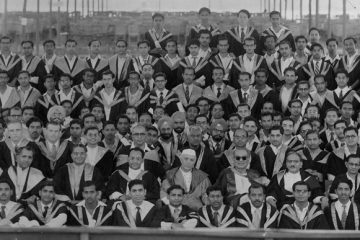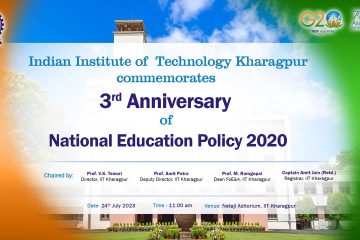
India Today , Times Now, Can India Headlines Today, Daiji World, Hans India, The Week, Outlook, Millennium Post
Curcumin, found in turmeric, and Ginsenoside, found in the roots of Ginseng, both known for their medicinal properties, could go a long way in treating blood disorders like thalassemia and sickle cell anemia. These two plant ingredients, together with approved drugs such as Valproate and Vorinostat were found to be “most suitable for future trials” by a team of genetic scientists at IIT Kharagpur. They are trying to see which drugs induce fetal hemoglobin production – which is known to ameliorate such blood disorders – and whether ‘repurposed drugs’ could be used. Repurposing of drugs, a new and exciting arena of scientific study, seeks to use approved drugs for clinical conditions other than those in which they are usually used for.

Blood disorders or hemoglobinopathies such as beta thalassemia and sickle cell anemia affect millions. They occur due to mutations in the β-globin gene, which leads to low or absent production of adult hemoglobin. Drug-induced increase in fetal hemoglobin – which constitutes a major percentage of the total hemoglobin in newborns, and which gets almost completely replaced by adult hemoglobin by 4 to 6 months of age – has been shown to improve the clinical features of those affected with sickle cell disease and beta thalassemia. Unfortunately, most of these drugs have serious side-effects and are therefore rarely used in therapy. Identifying new drugs could be a time-consuming and uncertain exercise. Hence scientists are trying to see whether ‘repurposed’ or existing drugs can be used to treat these disorders.
To find out which drugs could be investigated for possible repurposing to treat these specific blood disorders, scientists at the Regenerative Medicine lab of the School of Medical Science and Technology of IIT Kharagpur studied the working of microRNAs (miRNAs), and also which chemical molecules affect their expression pattern. MiRNAs, which are a small class of non-coding RNAs, have recently been identified as critical regulators of as much as 70% of the genes in the human genome.
The production of fetal hemoglobin in human body, much like other biological processes, is a “coordinated event under the control of genes and proteins encoded by the human genome”. Since miRNAs regulate the pathways along which the production of fetal hemoglobin is stimulated, how miRNAs work and how they regulate gene expressions have evolved into a major branch of study. Several miRNA databases, tools and algorithms have been designed by scientists all over the world to understand their gene regulatory mechanism. In fact, the Regenerative Medicine Lab at IIT Kharagpur has also devised a database called “miRwayDB” to provide comprehensive information of experimentally validated microRNA-pathway associations in various diseases. Additionally, the lab has also developed an interactive tool known as “miRnalyze” to unlock intuitive microRNA regulation of cell signaling pathways.
 ‘Messenger RNAs’ and ‘microRNAs’ are two important biomolecules found in our cells which are known to regulate cellular functions. Any abnormality in the production of these molecules may disrupt series of molecular events or pathways, which subsequently may manifest as critical diseases. Our lab has developed “miRwayDB”, a database which records information about the effects of these biomolecules on molecular pathways as observed in various diseases. The resource has many applications such as prediction of in silico models, integrative analysis, validation of computational analysis etc. In addition, we have also developed a prediction tool, “miRnalyze”, which can predict ‘messenger RNA’ targets of ‘microRNA’ in a molecular pathway. The tool can identify common ‘microRNAs’ that have more than one ‘messenger RNA’ targets. miRnalyze is a useful tool for hypothesis generation in ‘microRNA’ mediated molecular pathways. Both resources were published in ‘Database’ journal of Oxford University press.
‘Messenger RNAs’ and ‘microRNAs’ are two important biomolecules found in our cells which are known to regulate cellular functions. Any abnormality in the production of these molecules may disrupt series of molecular events or pathways, which subsequently may manifest as critical diseases. Our lab has developed “miRwayDB”, a database which records information about the effects of these biomolecules on molecular pathways as observed in various diseases. The resource has many applications such as prediction of in silico models, integrative analysis, validation of computational analysis etc. In addition, we have also developed a prediction tool, “miRnalyze”, which can predict ‘messenger RNA’ targets of ‘microRNA’ in a molecular pathway. The tool can identify common ‘microRNAs’ that have more than one ‘messenger RNA’ targets. miRnalyze is a useful tool for hypothesis generation in ‘microRNA’ mediated molecular pathways. Both resources were published in ‘Database’ journal of Oxford University press.
The team at SMST used several bioinformatics tools to match differentially expressed miRNAs with differentially expressed genes (as found in publicly available datasets) and identify their pathways. As many as 19 miRNAs were found to be differentially expressed in those subjects who had high fetal hemoglobin levels in their blood. Next, using another database (SM2MiR), the team identified 13 unique small molecules that strongly affected the expression of those 19 miRNAs. An exhaustive analysis of these 13 molecules showed that only five were definitely associated with the pathways that reactivated fetal hemoglobin production and can be further investigated for repurposing.
Prof. Nishant Chakravorty, who heads the Regenerative Medicine Lab and the team at SMST, said, “In our study, a number of genes and miRNAs were identified as putative molecular marker for HbF (fetal hemoglobin) regulation. The identified markers expand our understanding of HbF regulatory mechanism and may have importance in designing new therapeutic strategies to reactivate HbF production in patients with hemoglobin disorders.”
 Of the five, three – 5’-aza 2’-deoxycytidine, Valproate and Vorinostat – are known pharmacological agents. For example, Valproate is used to treat seizure disorders in childhood and Vorinstat is an anti-cancer agent. However, these have side-effects.
Of the five, three – 5’-aza 2’-deoxycytidine, Valproate and Vorinostat – are known pharmacological agents. For example, Valproate is used to treat seizure disorders in childhood and Vorinstat is an anti-cancer agent. However, these have side-effects.
Prof. (Dr.) Anish Chatterjee (MBBS, DCH, MD-Paediatrics), Professor, Dr. B C Roy Post Graduate Institute of Paediatric Sciences, said, “Medical practitioners nowadays widely use repurposed drugs. For example, Sildenafil, which is used to treat impotency in males is used to treat neonatal pulmonary hypertension. Again, Hydralazine which is used to control blood pressure, is also used to treat leprosy.” He adds, “Research in repurposing of drugs, which is being carried out by the Regenerative Medicine Lab of IIT Kharagpur, with which I have been associated with for some time, has immense potential. It might lead to the discovery of new information about existing drugs. Not only that, it could lower the cost of medical treatment as cheaper drugs, instead of the costly ones presently used, could be used to treat diseases.”
 The study at the Regenerative Medicine Lab was conducted by Prof. Chakravorty, his student at SMST, Mr. Sankha Subhra Das, and Dr. Rashmi Sinha of the B.C. Roy Technology Hospital. The work, which has been published in the April 2019 “Gene” and is available online, also identified natural compounds, such as Curcumin and Gensenoside, which have proven health benefits with minimal toxicity, which the team expects to be “of critical importance in future clinical trials for HbF induction”.
The study at the Regenerative Medicine Lab was conducted by Prof. Chakravorty, his student at SMST, Mr. Sankha Subhra Das, and Dr. Rashmi Sinha of the B.C. Roy Technology Hospital. The work, which has been published in the April 2019 “Gene” and is available online, also identified natural compounds, such as Curcumin and Gensenoside, which have proven health benefits with minimal toxicity, which the team expects to be “of critical importance in future clinical trials for HbF induction”.
Mr. Sankha Subhra Das, a research scholar associated with this team, is already working on other facets of thalassemia treatment, and has done several other in silico studies using bioinformatics tools. Other PhD scholars, such as Mr. Motiur Rahaman, is working specifically on beta-thalassemia. “We are trying to classify HbE-beta thalassemia into different categories based on clinical severity and trying to see if there is correlation with HLA haplotypes,” said Prof. Chakravorty. The team is enriched by several scholars such as Dr. Suman Kumar Ray (post-doctoral fellow), who has a background in plant medicine, and helping it to see how plant based phytochemicals can help increase fetal hemoglobin. The researchers at the Regenerative Lab are also engaged in research on repurposing strategies for bone and cartilage regeneration. The team will be moving on to do further experimental in-depth studies particularly on thalassemia patients. An active collaboration with Prof. (Dr.) Tuphan Kanti Dolai’s clinical team at the Department of Hematology, NRS Medical College and Hospital, Kolkata holds promise to this.



